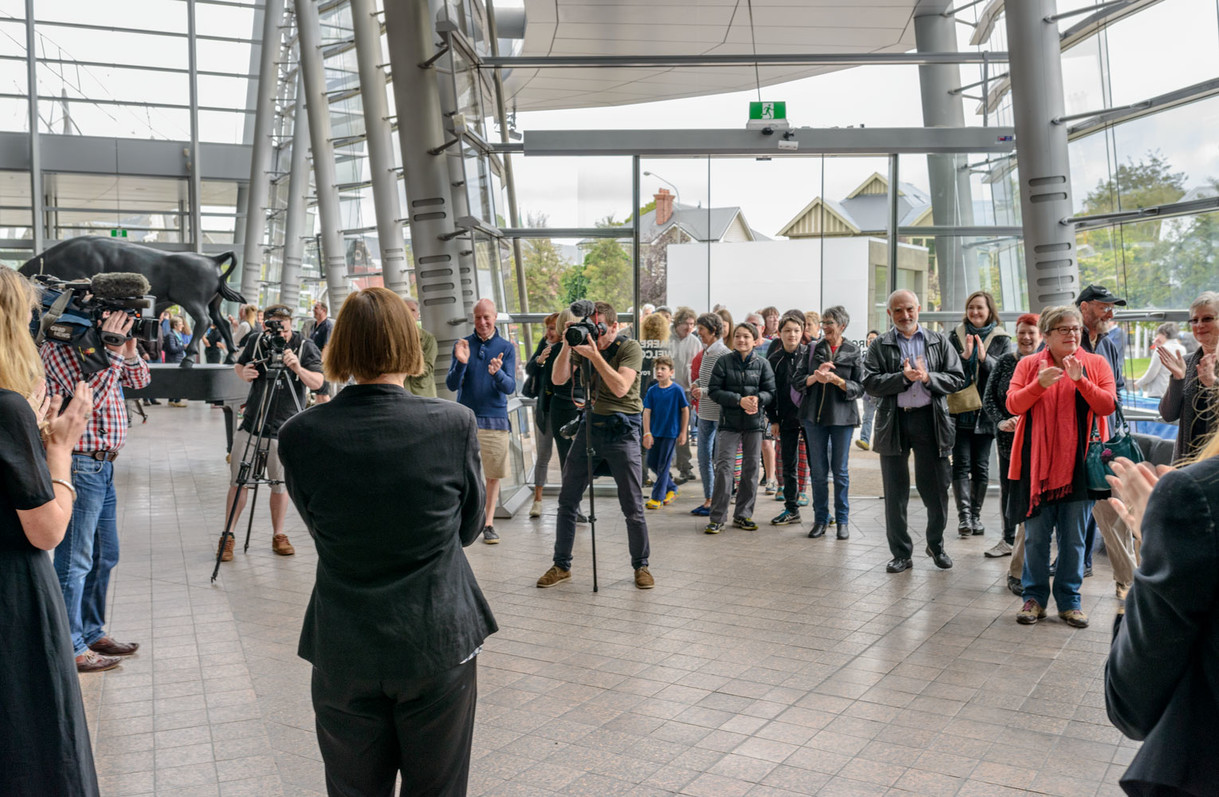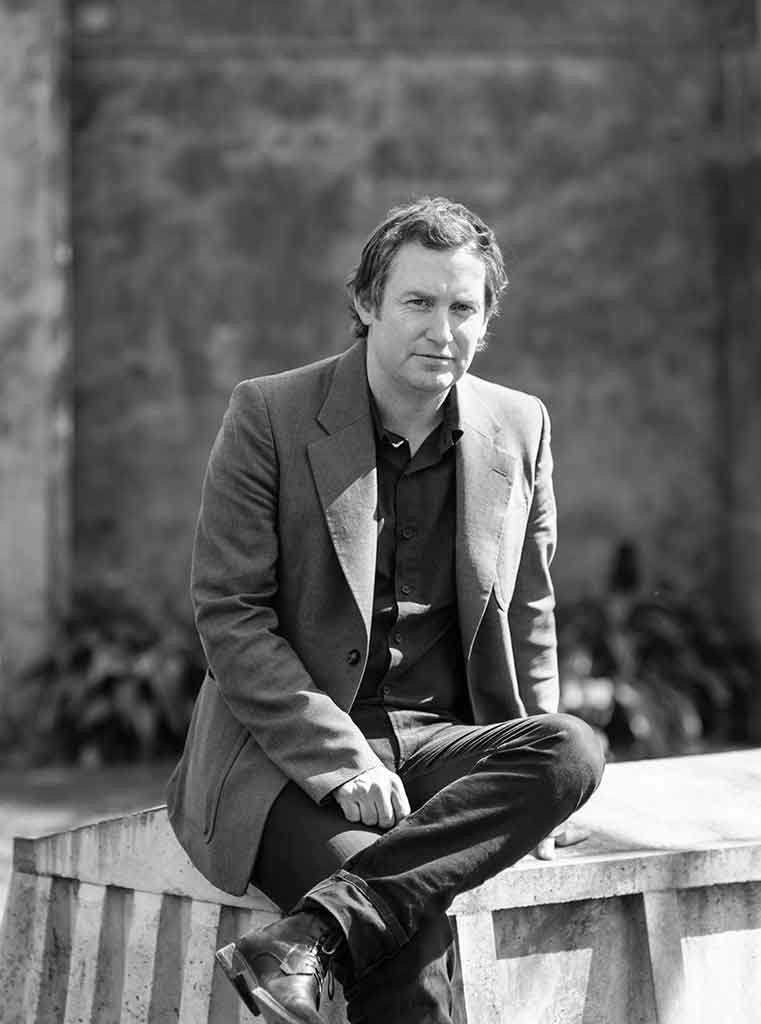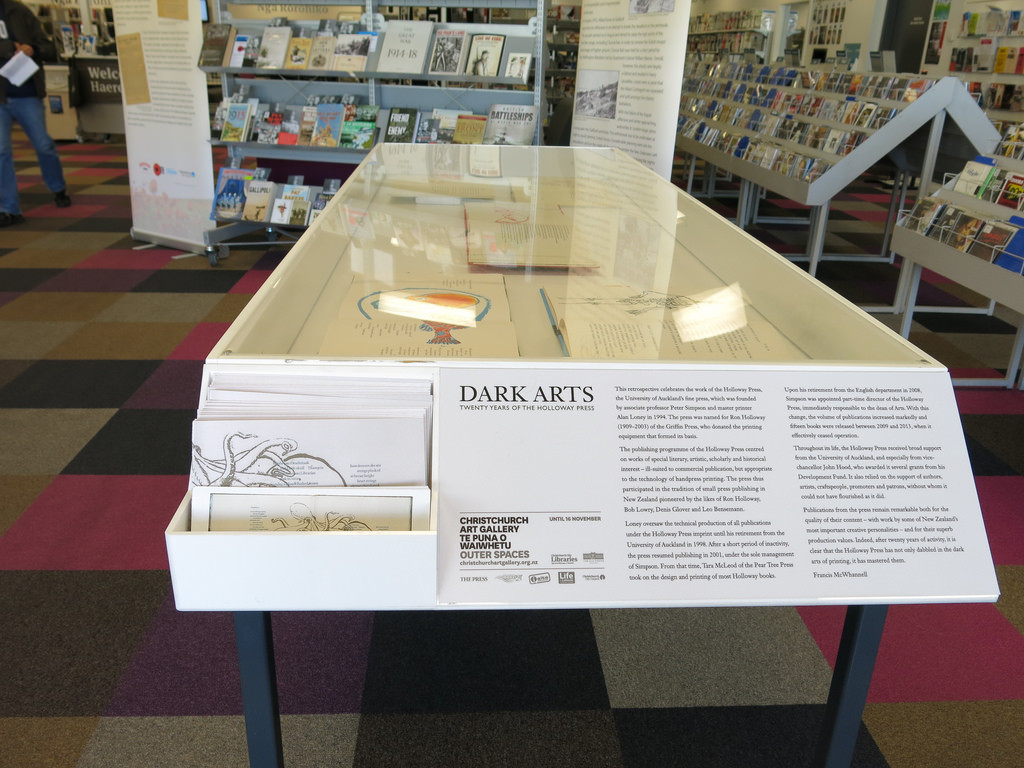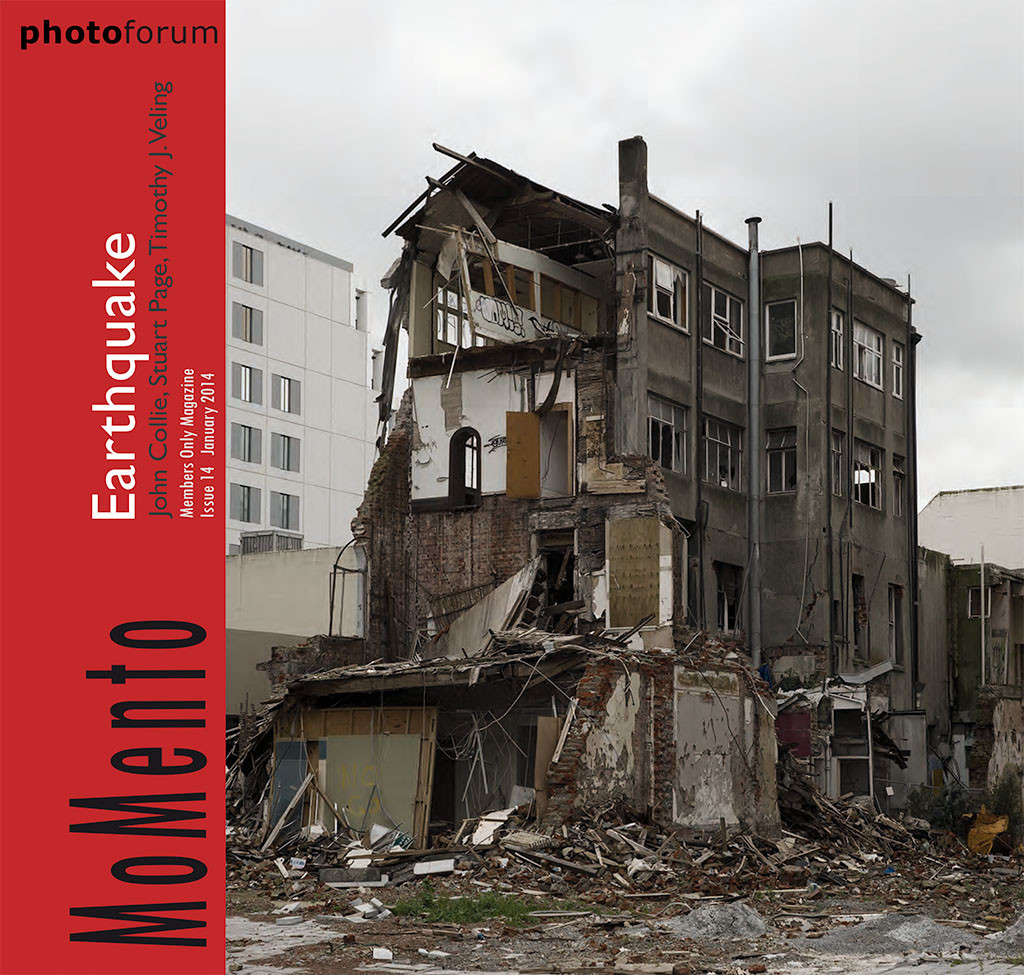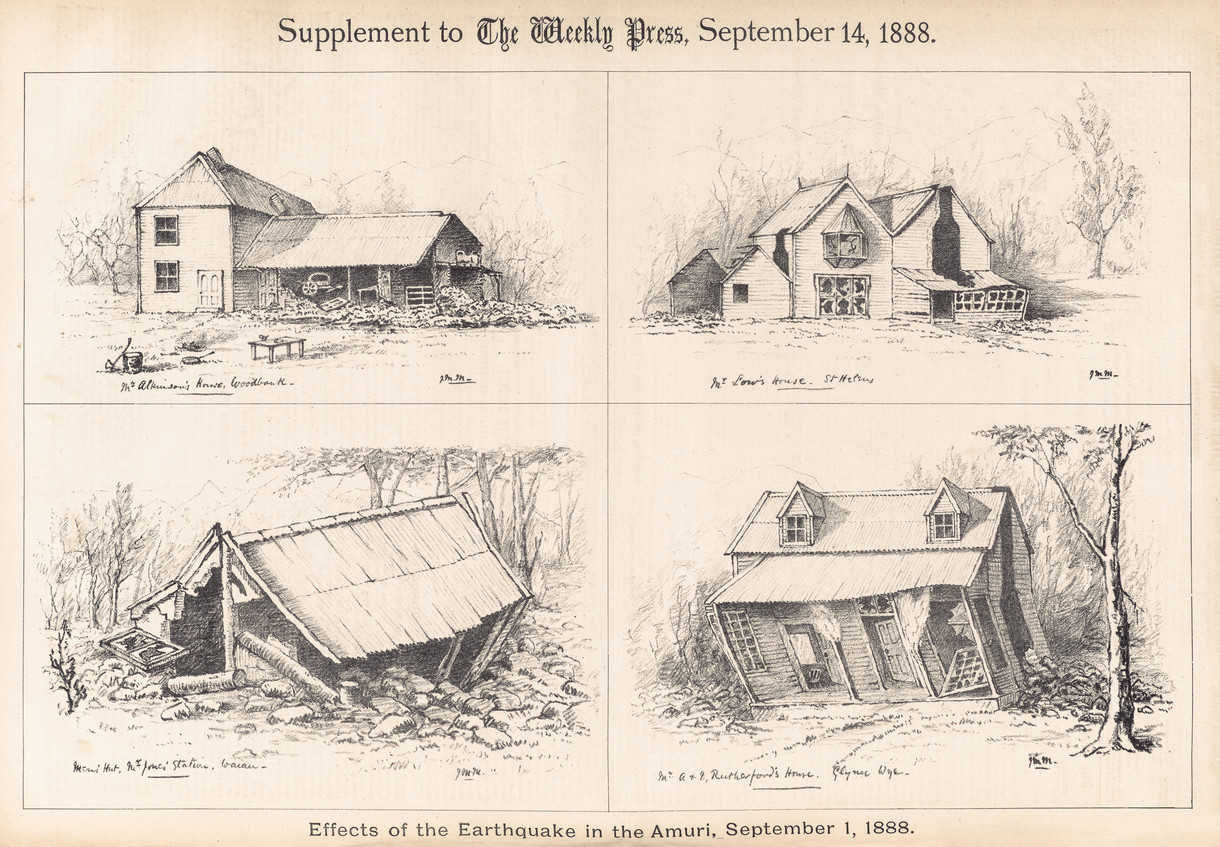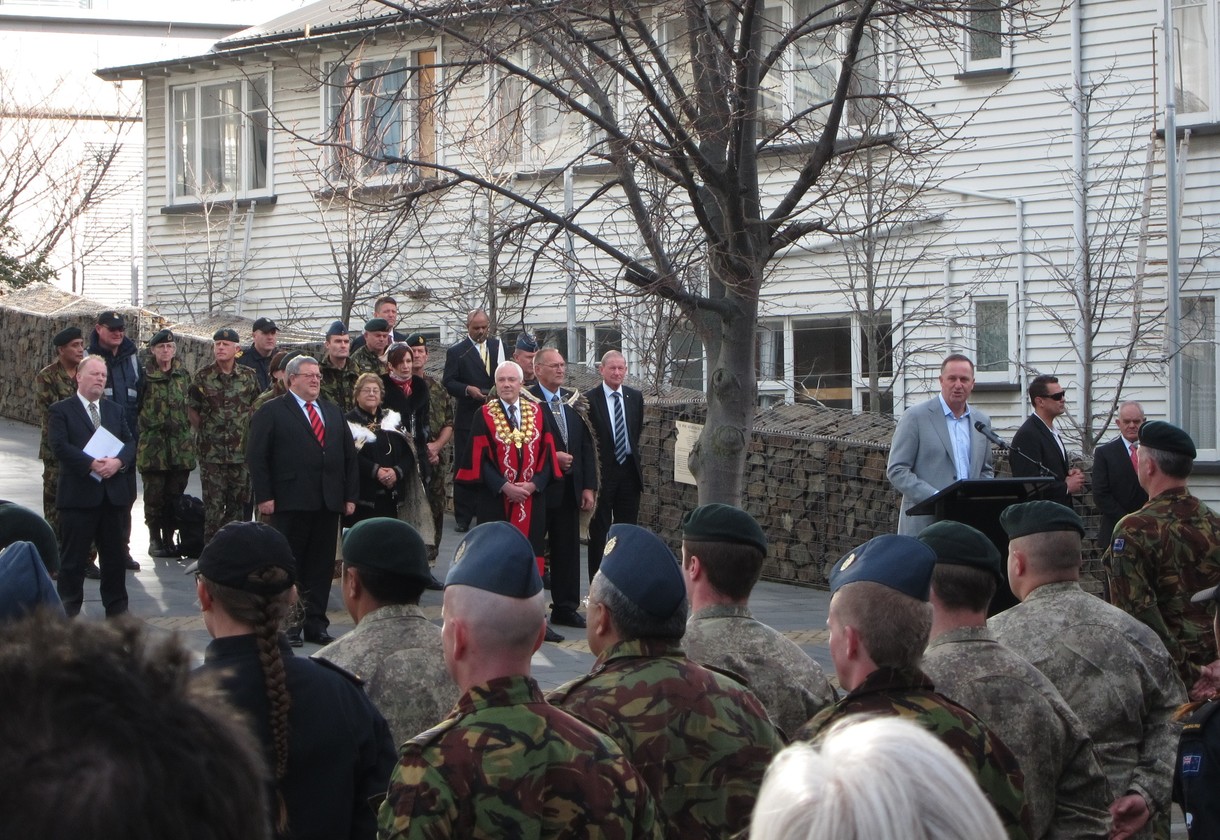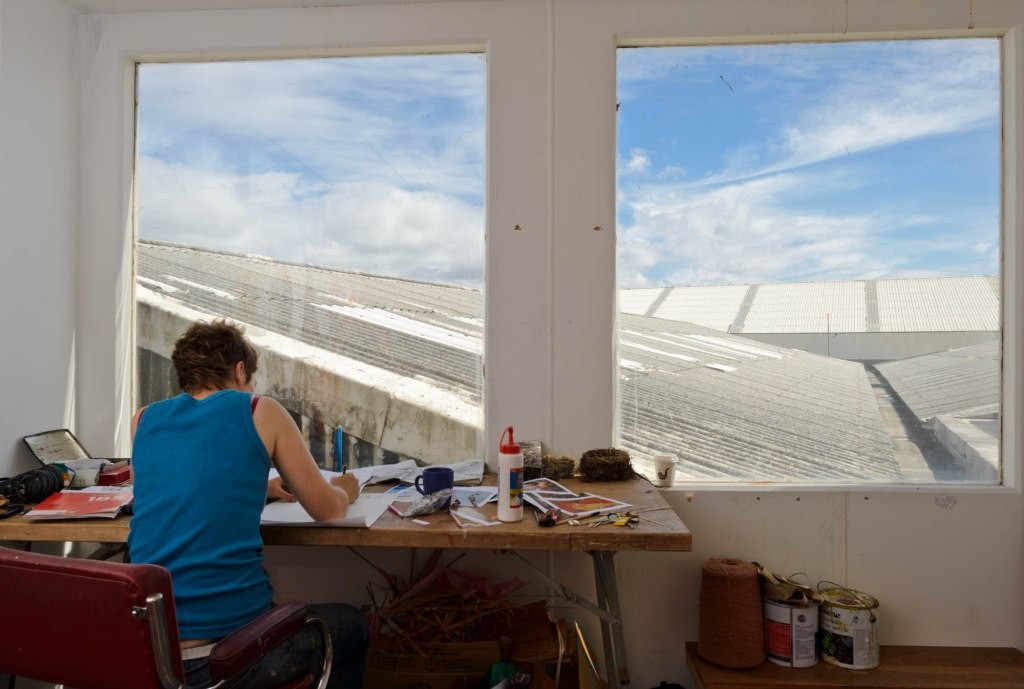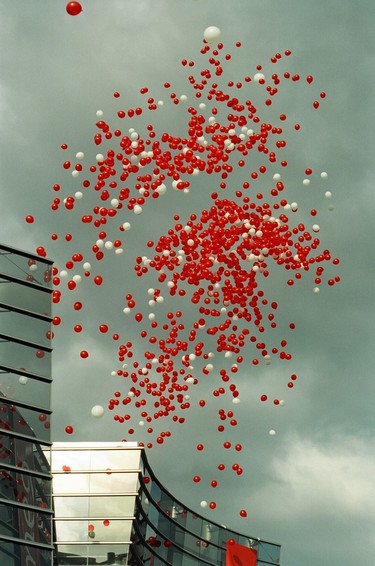
Christchurch Art Gallery is ten: highs and lows
In recognition of the anniversary of the move of Christchurch's public art gallery from its former existence as the Robert McDougall in the Botanic Gardens to its new more central city location (now eerily empty), I've been asked by Bulletin's editor to recall some highs and lows of the last ten years. So here goes — and stay with me during this reflection, which takes the place of my usual foreword.
Of course, I haven't been director throughout the entire ten-year period, and I can't take credit for arguing for this new building, nor for planning and watching over the detail of its development. That glory belongs to my predecessors, both John Coley and, latterly and more directly, fundraiser and director-on-the-spot, Tony Preston. It was a long journey, as Preston himself noted in 2003: 'Debate waxed and waned, troughed and crested, until in 1969 there was a recommendation as a matter of urgency for a new building to replace the charming, but quite inadequate McDougall...'1
Just as the establishment of a public art gallery in Christchurch, the Robert McDougall, came relatively late in New Zealand's cultural landscape, its 'urgent' replacement was to take some thirty-four years to achieve.2 Despite not being part of this civic achievement, I recall its occasion vividly, having flown from Wellington where I lived to be part of the grand opening of Christchurch Art Gallery Te Puna o Waiwhetū on a chilly but fine Saturday morning in May 2003. I'd been asked to review it, so I'd already seen through the new gallery, but I did not want to miss the weekend of events.3 It was justifiably a major celebration, with speeches by then mayor, Garry Moore and prime minister Helen Clark; red balloons were released in jubilation, 'Pokarekare Ana' was sung by Dame Malvina Major and a specially-commissioned work, 'Fanfare' by Gareth Farr, played triumphantly at the morning opening. Special lift-out sections were prepared by The Press, and kapa haka performances, string quartets, brass bands and comedy events secured this as a major community weekend. A triumph of planning, fundraising and sheer hard work had paid off.
The former Robert McDougall Art Gallery had closed its doors in June 2002, its 70th anniversary, in preparation for the change. Through this period of planned closure, Christchurch had a mere ten months to endure without its art heart – a time no doubt made easier by the anticipation of a brand new development opening shortly.
Of course, there were architectural detractors from the beginning. Shortly after the hoardings came down in 2002, local historian John Wilson offered a preliminary verdict in a dismissive but amusing term that stuck in the public's imagination – 'a warehouse in a tutu'; David McPhail's 'aircraft hangar wearing a ball gown' was less catchy.4 And the late architect Peter Beaven did not think the new art gallery sat at all well with old Christchurch, describing it as a 'great alien'.5
However, Christchurch's public flocked to see it and supporters also went to print, with Hamish Keith proffering that the building was at the very least a 'very practical warehouse in a very elegant tutu'. He expressed relief at the lack of 'interactive thingy[s]', approving this as a sign of 'curators getting back to basics and letting the art speak for itself '.6 A major cultural voyage was over and former director John Coley described the new building as being 'as far removed from its precursor in the gardens as a Ferrari is from a Model T'.7
So an early triumph and a definite 'high'. My own assessment? I said on several occasions it was a great leap of faith and an incredible cultural investment, an architectural statement which broke the rules of the Victorian Gothic and colonial surroundings; an intervention and interloper. Although unlikely to be classed among the architectural wonders of the world, this nonetheless functional building has seemed in some small way like 'our Bilbao'. A certain poignancy is attached to this view from a distance, post-earthquake and after so many demolitions, but I praised it from the beginning for not presenting as a temple of art nor for being a 'safe-looking building', but for being a precocious intervention and an upstart.8
When I reviewed the Gallery prior to returning here to take the helm, I also noted that, while the collections were quite rightly given pride of place, their display seemed 'a little too sedate and strangely static'. Identifying a sense in which the model of the cherished McDougall had been transferred to a new site, without having been rethought, I considered the challenge for this new Gallery was, 'to raise the stakes by acknowledging it is no longer the McDougall, but [rather] is poised to become the force in the New Zealand art scene that Christchurch deserves.'9
Despite great first-year visitor numbers, subsequent exhibitions lacked focus and it was perhaps unsurprising that numbers began to fall below expectations established in the business case for the new building. Nor that it was reviewed by City Council in 2005–6 in the locally infamous 'Paradigm Shift'. Probably an exercise which was needed, it was certainly poorly handled in public relations terms. As Martin van Beynen wrote in The Press, former director Tony Preston, a 'civic hero in 2003, left the art gallery in 2006 with his pride battered'.10 Other staff also left and a number of key funders and Gallery supporters were understandably unsettled and angry.
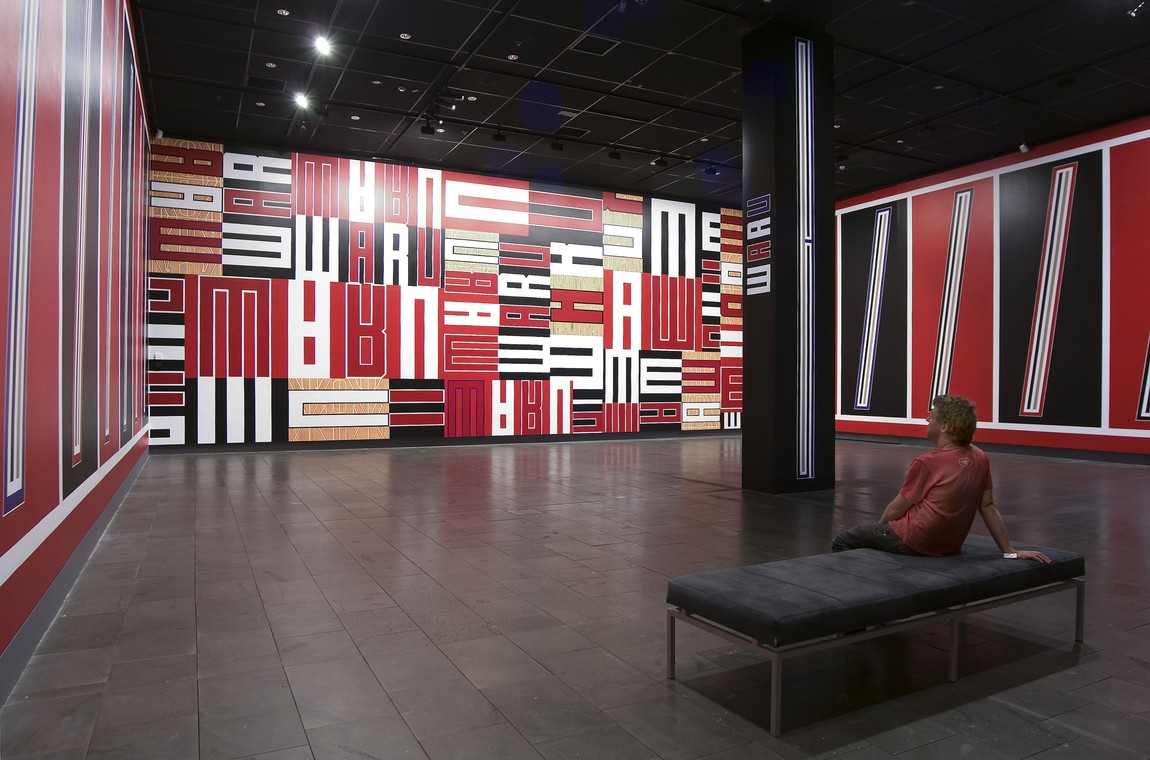
Installation view of Darryn George: Pulse in 2008
So there was important work to be done when newly appointed senior staff Blair Jackson, Neil Semple and I began in October 2006. We were excited by the potential of the Gallery and ambitious for its future. A top priority for us was to demonstrate the Gallery could bring in larger and more diverse audiences and hold their interest; a key Council target was to reduce the cost per visit. They were mutually supportive, but differently expressed goals.
We got to work, within nine months also appointing Justin Paton, our well-regarded senior curator and a great communicator about art and its tasks. As sometimes happens at a time of turnover, there was virtually no programme in place, but Giacometti: Sculptures, Prints and Drawings from the Maeght Foundation in late 2006 was wonderful. I recall speaking at a women's lunch while it was on and being asked whether we'd ever get to see Picasso here in Christchurch. Sighing inside, I wanted to shake the questioner and say, 'You have a show here now by a great artist much admired by Picasso – go while you have the chance!' (I was new and recall being more tentative in expressing myself then.)
Gallery staff worked well at this time, embracing the tasks at hand and setting about activating and enlivening the inside of the building, heralding change fairly early on with a memorable Daniel Crooks video show and immersive Darryn George installation (Pulse, 2008). We commissioned a series of temporary art installations in our foyer, from Sara Hughes's United we fall (2008) to Inez Crawford's Bouncy Marae (2008) to the Andrew Drummond kinetic sculpture in place on 4 September 2010. (I wince now at the desperation of the bright national flags which decked the balconies and the Italian cars on the forecourt for a time in early 2006.11 Where was the Gallery's confidence in art to bring in an audience?) A lively new schools and public programme was organised also.
And we started to show art outside the Gallery in an early iteration of Outer Spaces. The unfortunate 'bunker' on our forecourt became a site for murals outside, while inside a sound art programme offered those going to the car park below some often mysterious accompaniment. We were on a roll. Individual presentations may have been challenging to support, but nothing was too difficult for Christchurch Art Gallery.
A significant early high point occurred when we secured extra funding within the Council's 2009–19 long-term plan to remodel the upstairs gallery spaces and to re-present our collections. Consequently, it was a moment of huge pride for us to open the seemingly more light-filled and larger exhibition spaces of Brought to Light in 2010. A newly-conceived display of our collections, it began with a powhiri or greeting space acknowledging the first settlers in this region and was extended by local and national stories and vignettes explored through our collections. Showing some great recently-bought works, including Bill Hammond's Living large 6 (1995), purchased for us by our supportive Trust after the unfortunate failure of a hanging device while it was in our care (a definite 'low' in our recent history). The exhibition Brought to Light set up conversations between and within works of art and visitors; it raised questions as well as proposing answers; it both gave public pleasure and won us professional accolades. It was a model art exhibition, one I'm sure we aspire to parallel, if in a differing format, when we are able to show on site again.
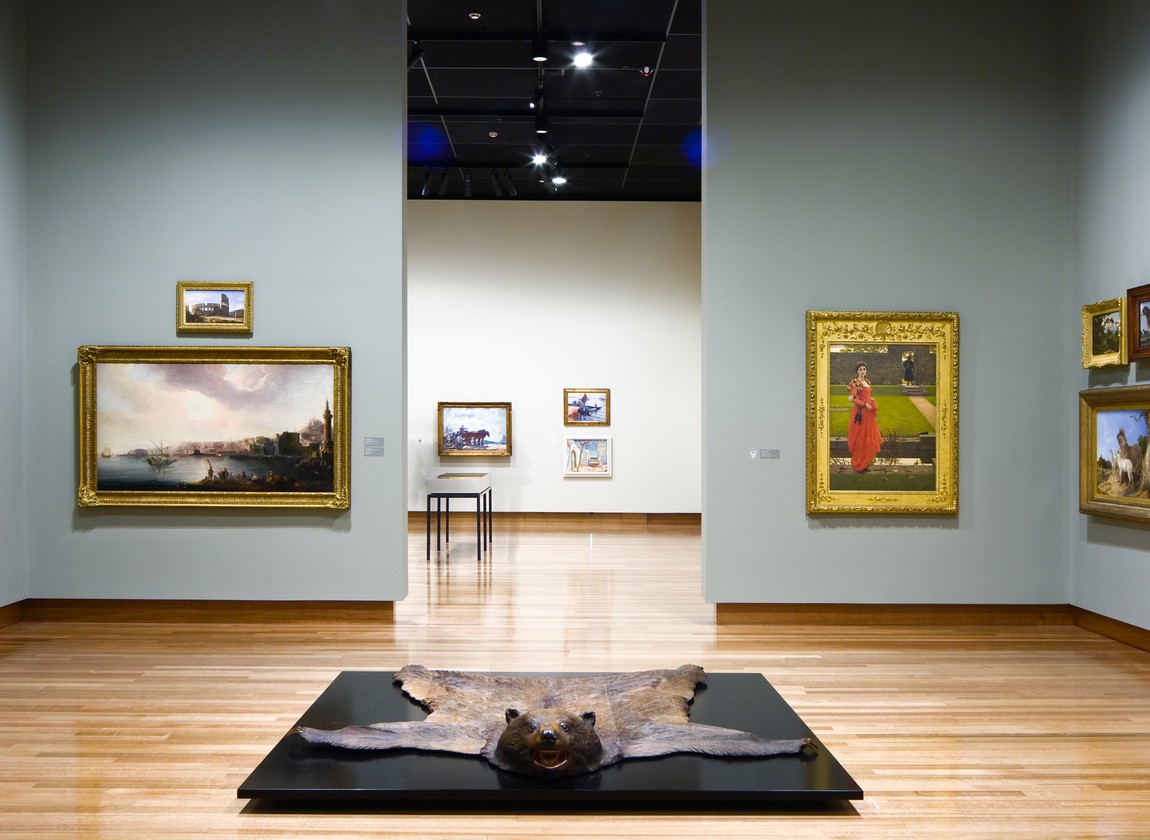
Installation view of Brought to Light: a new view of the collection in 2010
I was also especially proud of our family-friendly space, which was developed with a series of colour-themed exhibitions: I See Red, White on White and latterly, Blue Planet, which flowed into a trail of works throughout Brought to Light that encouraged families not to simply stay in the 'play section' but to explore all the way through. These exhibitions remain models for this kind of display, never talking down to anyone, appealing to kids of all ages.
Christchurch Art Gallery has also showed a firm commitment to local and locally-trained artists such as Julia Morison, Bill Hammond and Andrew Drummond, with full-scale exhibitions and well-designed catalogues – and offering these to other centres. Our exhibition of Canterbury-trained Séraphine Pick toured to Wellington and Dunedin; The Vault: Neil Pardington went to five other venues in New Zealand.
Positive press followed us all the way and our visitor numbers were also buoyant, with 470,074 visitors in 2009–10 (up from 391,000 in 2007–8). In an internationally benchmarked survey in 2010, it was revealed that a staggering 91% of Christchurch residents defined themselves as repeat visitors. We found that visitors stayed an average of 71 minutes, with first-time visitors staying 91 minutes in all, indicating the Gallery is probably a good size. Some 74% said they would recommend us to others and I was thrilled by the fact that 28% of visitors found themselves challenged by what they saw at the Gallery (compared with 2% who came expecting this during their visit).
And we've attracted some major and extraordinary gifts during the last ten years, from artists Max Gimblett and Philip Trusttum among others. I recall well being in Melbourne at the opening of Ron Mueck at the National Gallery of Victoria when the announcement was made of the wonderful and unexpectedly sizeable bequest by Norman Barrett. Supporters such as this are of the greatest significance to the Gallery, enabling the proper continuation of collecting at a time when prices outstrip city budgets. In this context, I also consider the establishment of the Challenge Grant to have been a wonderful high point. In an agreement between Council and the Art Gallery Trust, which I think is still unique in Australasia and perhaps anywhere, individual donations for collection development are matched dollar-for-dollar up to an agreed level annually. Long may it continue!
I guess Ron Mueck was the best-known recent high point in the Gallery's history. A huge public success, this exhibition, to which we allocated the entire downstairs area, attracted 135,400 visitors, 60% from Christchurch, 33% of whom were first-time visitors. It also inserted more than $3 million into the local economy. Neatly sandwiched between the September and February earthquakes, the emotional pull of these great and small sculptures was profound and lasting – visitors really engaged with looking and with marvelling at life and death. People still mention it often.

Crowds queuing for tickets in the final days of Ron Mueck in 2010
Gallery staff were fully engaged as we triumphantly replaced this single show with three: Van der Velden: Otira; Leo Bensemann: A Fantastic Art Venture; and De-Building. Launched on 10 February 2011, with three new publications and a major gift and bequest also to celebrate, it was too early to gauge overall success, but using pre-Mueck visitor figures as a guide, we were confidently predicting a total visitor count in 2010-11 of at least 700,000 – the equivalent of more than twice the population of this city. How cruel when 22 February cut all that short.
I won't dwell too long on the more than two years of closure since our Gallery became the city's headquarters for emergency response in what was a national disaster. It was positive to have provided a safe haven at this time of recovery, but Bulletin readers are only too aware of our eagerness to reopen this key community facility and our frustration – shared by our audiences – at continuing delays, whatever the reasons and their legitimacy. The demolition of apartments next door was an explicable hold-up, but much time has passed since then. Not withstanding our own repair programme is more complex than we thought initially, we loathe the doors staying shut.
As for many in Canterbury during the last two years, this period will no doubt be seen as an all-time 'low'; a time of enforced closure destructive to the cultural well-being of our community and our ability to contribute to the daily life of a busy inner-city. However, while we remain unable to predict an opening date with confidence, we have not been rudderless as we deal with the situation on a daily basis.
Against all odds, we've become a 'Gallery without Walls', sometimes showing art on display boards outside (as with Reconstruction: Conversations on a City along Worcester Boulevard in 2012), sometimes presenting works on newly exposed walls (Kay Rosen's Here are the people and there is the steeple and Wayne Youle's I seem to have temporarily misplaced my sense of humour), sometimes supporting artists affected by the earthquakes as in the Rolling Maul series. We've enhanced and multiplied our Outer Spaces art projects around the Gallery and further afield, presenting projects on walls, in windows and on rooftops throughout the city. In short, we're creatively continuing with what we might have done within the Gallery in different ways, but also literally expanding what is possible.
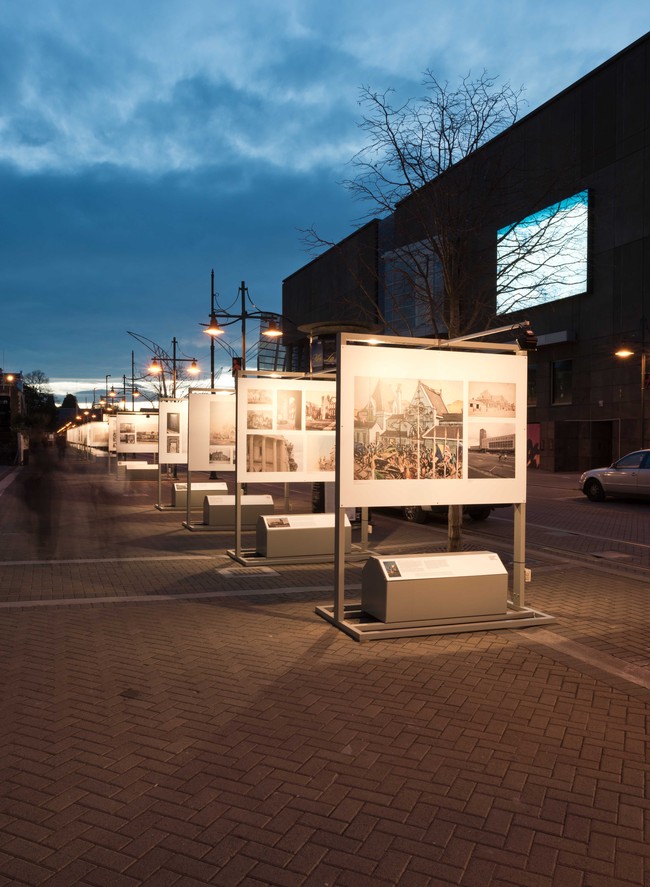
Installation view of Reconstruction: Conversations on a City in 2012
The most profound local impact to date was made in 2012 with the return to New Zealand of Michael Parekowhai's 2011 Venice Biennale presentation. An intricately-carved Steinway piano was winched into our temporary space at 212 Madras Street and played beautifully during opening hours while, across the road on a readily-accessible site amongst the rubble and destruction, two bronze bulls sat or stood atop bronze pianos. Few could have envisaged the extraordinary layers of meaning this would acquire in our broader community's imagination. Would it have seemed so poignant, so redolent with meaning in our more-manicured gallery spaces? Would it have invaded the hearts, heads and lives of our citizens to the same extent? What a lesson for us all. We were particularly pleased when in April of this year, our Outer Spaces programme was recognised with the top national award for Exhibition Excellence – Art at the Museums Aotearoa Awards. It is always good to get recognition, but there's something special about receiving such an accolade from your peers.
This Bulletin has come into its own in ways we didn't then imagine, becoming freer and more like a journal without such a full gallery-specific programme to promote. And as we reverse the normal order of things in a range of ways, another superb publication is in print to accompany Christchurch Art Gallery's new Shane Cotton exhibition, currently in Campbelltown, NSW before it opens at City Gallery Wellington later this year. (And yes, we expect to show this in Christchurch at the end of its current tour.) Our staff have identified and tackled back-of-house projects, so that now 90% of our collection is available online with images copyright-cleared for Gallery use, and a great 'My Gallery' function is operating on our website (have you tried it yet?). We've enhanced our presence online by blogging daily (and more), and maintained our profile locally and further afield.
Sadly in April 2012 we needed to lay off some staff, but with a closure so much longer than we initially hoped, with our collections in lock-down and our building rendered inaccessible to visitors, we are simply unable to sustain all aspects of our operation. A strong core of committed staff remains and other key positions will be re-advertised prior to reopening.
While we cannot currently make our collections directly available, our schools and other public programmes have been delivered in classrooms and other spaces across the city and a team of volunteer guides has stayed with us. The shop has opened in new premises in the temporary central library building between Lichfield and Tuam streets; we have now established temporary off-site venues at 212 Madras Street and 209 Tuam Street, and we look forward to the repairs of CoCA next door in Gloucester Street, which we hope to lease for some months.
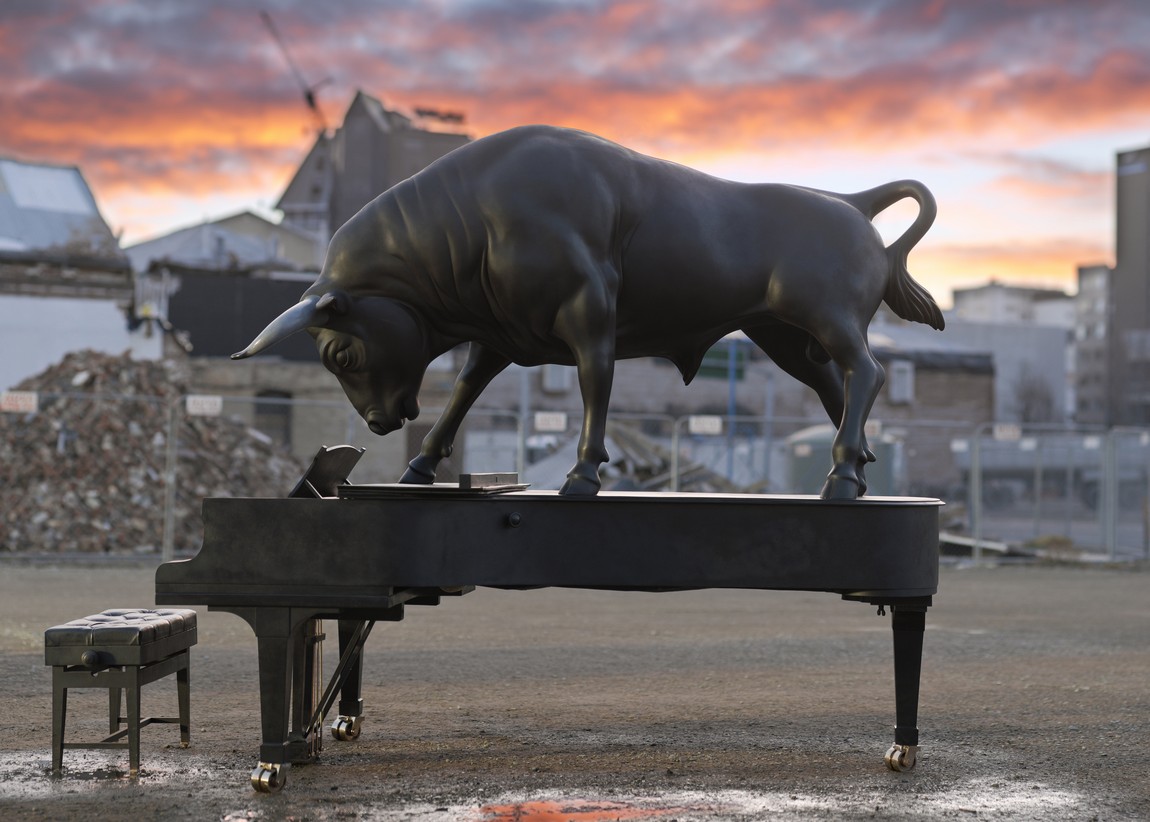
Michael Parekowhai Chapman's Homer (detail) 2011. Bronze, stainless steel. Courtesy of the artist and Michael Lett, Auckland
During our forthcoming repairs, there are adjustments we'd like to make to the building and site, opportunities to take advantage of in and around our Gallery to ensure its longer-term well-being and future. We recognise that Christchurch is awash with opportunities, not all of which are affordable, but we'll push for some while they're possible. And many thanks to our Council for supporting the go-ahead of the Gallery's repair schedule even in the face of some unknowns. I'm glad it hasn't taken thirty-four years this century to agree and act on the wellbeing and continued long life of our city's art gallery.
Our first ten years has presented a whirlwind of changes, with immediate challenges remaining. Who could have predicted even half of these on 10 May 2003? Throughout our highs and lows, however, no other city in this country has taken a new gallery to its heart as has Christchurch. I am fully aware of how a visit to any metropolitan art gallery in the world reveals a city's DNA : its memory through its collections and its imagination through the new art and experiences it encourages. Four years of closure seems too long now, but – in order to continue to attract loans and to become the Gallery we were once more – there should be no short cuts taken to ensure the building's future seismic resilience.
As we approach our 10th birthday in May, and present a range of new works in the burst of fresh images of people in an inner-city programme we're calling Populate! Christchurch Art Gallery faces the uncertainties of its future with a confidence honed by realism, but also with an unwavering belief in the important difference we have made and can continue to make. So here's to our amazing staff, volunteers and audiences – may the next ten years bring us resolution, advancement and great good fortune.
Jenny Harper
Director
April 2013








